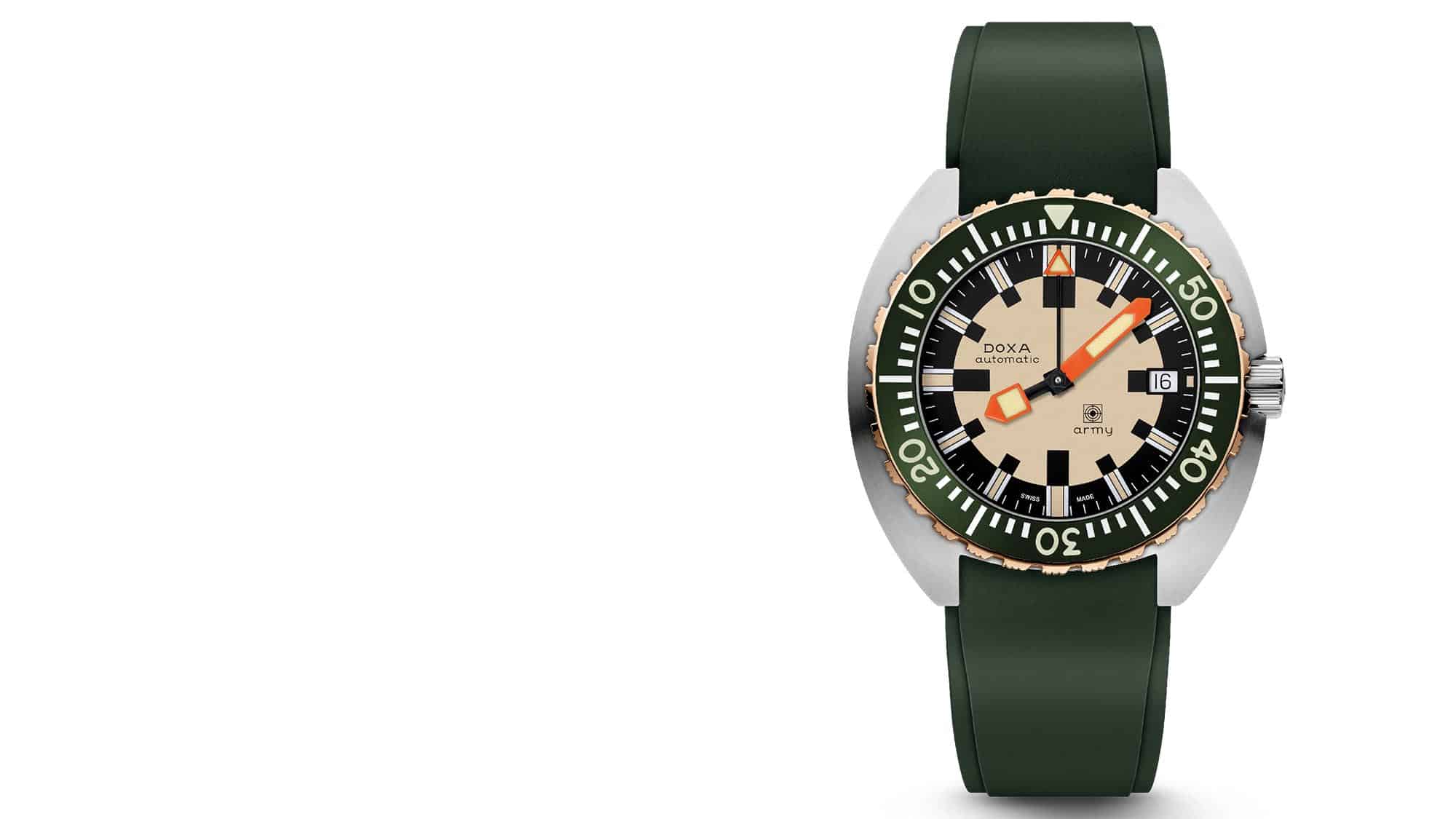Doxa
Precision, Winter 2022
When it comes to dive watches, the Rolex Submariner and the Blancpain Fifty Fathoms have been around the longest, both having made their debuts in 1953. But when scuba became popular among hobbyists during the 1960s, the number of specialist dive watches burgeoned as numerous brands added them to their catalogues.
Many of these names are now largely forgotten outside of collecting circles (such as Titus, Monvis, Lanco, Camif and Dodane, to name but a few), but one that has deservedly stood the test of time is Doxa.
Already long established as a maker of regular wristwatches, Doxa unveiled a model called the Sub Concept at the 1967 Baselworld fair – the first ever watch to feature an orange dial.
The Sub Concept was not designed merely to look the part, but as a fully functional professional instrument that was mainly obtainable only from dive shops.
Doxa’s then product boss Urs Eschle was inspired to make such a serious underwater tool watch by the burgeoning number of magazine articles, documentary films and television shows that had come about following the perfection of scuba during the 1950s.
Diving watches, such as the aforementioned Submariner and Fifty Fathoms, had been available for more than a decade, but they were mostly worn by military and professional divers and were expensive to buy.
But Eschle saw a market for a more affordable, purpose-designed watch made for the growing army of amateur sport divers. So, in 1962, he set out to develop the original Doxa Sub with the help of Claude Wesly, a member of aqualung co-inventor Jacques Cousteau’s underwater exploration team.
But no sooner had the watch been introduced than Eschle set about refining it, releasing both the Sub 200 T.Graph and the Sub 300T Conquistador in 1969, the latter being the first diving watch to feature a helium release valve in order to prevent a build up of tiny molecules of the gas from blowing the crystal off during a diver’s ascent to the surface.
But despite the capabilities of the various dive models, the watches failed to prevent Doxa from ‘going under’ when the so-called quartz crisis hit the Swiss watch industry a few years later.
The brand was, however, re-born in 2001 and duly returned to dive watch production – inspired, no doubt, by burgeoning interest from collectors worldwide in its many vintage models.
There’s now a vast line-up of Sub models in multiple dial colours and the range is far and away the brand’s bestseller – and now there’s a variation on the theme, Army, following the discovery that Doxa was called upon to supply watches to the specialist diving units of the Swiss forces during the early 1970s.
Specifics are as hazy as the floor of Lake Geneva, but it seems dials were black and beige, hands were orange and cases were made from blackened steel.
Having launched a limited-edition re-issue in black ceramic earlier this year (now sold out), Doxa has recently unveiled two new steel versions, one with a steel bezel with black ceramic inlay, the other with a bronze bezel and green inlay. Choose from a steel bracelet or rubber strap and get a camouflage NATO-style band thrown in.
